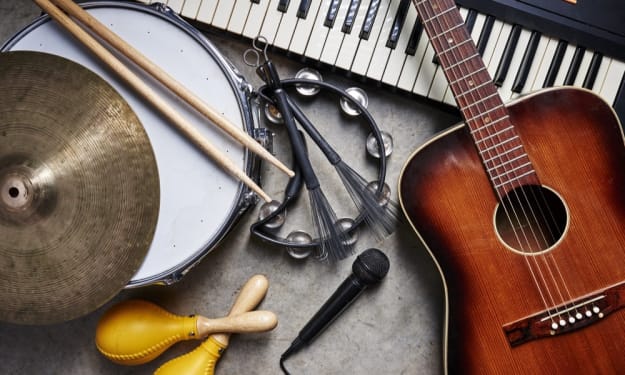How to Make Your Headphones Sound Better?
The Headphones Guide

The time has come to exchange holiday presents that weren't quite right. Don't hurry to return it if one of those presents is a set of headphones that don't sound as nice as you had hoped for—perhaps you hear too much bass or not enough high-end detail. A feature called EQ in your headphone smartphone app can allow you to enhance the sound.
To create a sound environment that appeals to you, you can alter the loudness of one or more frequency bands using the equalization technique, or EQ. Nowadays, a lot of headphone manufacturers provide applications with EQ tweaks for compatible headphone models. The relative loudness of low-, middle-, and high-pitched sounds may be altered by means of these modifications, which might take the form of broad, general presets. They could also be more powerful, including virtual sliders that allow you to adjust the sound by raising or lowering particular frequency ranges. Once you've found your preferred sound profile, you can store these EQ settings in your headphones and listen to it regardless of the device you're connected to or the music app you're using.
A properly-designed EQ program can correct fit problems, acoustic variations in your ear, as well as differing hearing abilities and preferences. Unfortunately, it cannot correct headphones with low component quality and poor design. Not every set of headphones or earbuds can accurately duplicate the EQ adjustments you make, so be sure yours can. In spite of the fact that many of the headphones we examine don't receive a recommendation, they do include an app with some EQ adjustments. But before giving up on that new pair of headphones entirely, it doesn't hurt to experiment with the EQ feature.
Bothersome Bass: 20 Hz to 200 Hz
Most people can usually tell when a song's bass is lacking. The music starts to sound flat or loses its punch. Pianos and upright basses, which have resonance, may have a flat sound. In some circumstances, turning up the lowest bass range by a few decibels (20 hertz to 40 Hz) frequently solves the problem.
Missing Midrange: 200 Hz to 2 kHz
Sometimes while listening with headphones, it seems like the center is missing. Pop-style guitar solos sound softer than normal, and the prominence of the male voices is diminished. They are referred to as recessed mids. In these situations, raising the middle frequencies to between 400 and 500 Hz might be beneficial.
Harsh or Hidden Highs: 2 kHz to 20 kHz
The top third of the human hearing spectrum is made up of high frequencies, commonly known as treble. Sometimes, headphone makers would add a narrow boost, or spike, in the high frequencies to counteract too much bass or give the appearance of more detail. When the highs are overemphasized, the result can range from being somewhat abrasive to being piercing and unpleasant. When done carefully, this can add some sharpness to the sound. When the high frequencies begin, it's not a good indication if you immediately want to turn the music down.
The frequency bands that are over-boosted most frequently are 2 kilohertz to 3 kilohertz and 7 kHz to 8 kHz. Female voices have a harsh, almost nasal character when the 2 kHz to 3 kHz range is over-boosted; when the 7 kHz to 8 kHz range is over-boosted, "s" sounds have a whistle-like quality, nylon or natural strings may sound metallic, and drum beats can have a tinny feel.
Conversely, high frequencies often disappear first as we age and lose our hearing capacity. You should get your hearing evaluated and think about getting hearing aids if you notice any of the many indicators of hearing loss. But often all we need to improve overall clarity or make lyrics simpler to grasp is a tiny spike in the highs.
When adjusting the treble, gently raise or lower the level as necessary until the higher frequencies sound clear and crisp without being jarring. The ideal practice is to start at about 8 kHz and move up or down in frequency from there if your headphones' app enables you to make precise high-frequency changes. The highest note of the piccolo, the highest-pitched instrument in an orchestra, reaches a maximum of 5 kHz, whereas human hearing can reach a maximum of 20 kHz. Sounds that affect our capacity to perceive speech peak at 8 kHz. If your equipment lacks marks for the frequency range, start a little lower than the highest frequencies you can adjust, then work your way up or down in pitch until you have the necessary level of detail.
All of the Aforementioned
Don't be hesitant to change more than one frequency range because headphones frequently have many flaws. Just focus on one area of difficulty at a time. If you increase the intensity of one range and discover that it sounds distorted, keep in mind that balance is a ratio; as a result, you might want to consider reducing the loudness of other frequency ranges. You can get the best headphones from TrueGether, the best alternative to eBay out there.
About the Creator
Tanvi Punia
I help Individuals, Coaches, Businesses, Founders, Entrepreneurs, & Marketers to grow in their businesses through Social Media by creating & designing visual content that aligns perfectly with their brand, values, and voice.🤝🏻






Comments
There are no comments for this story
Be the first to respond and start the conversation.